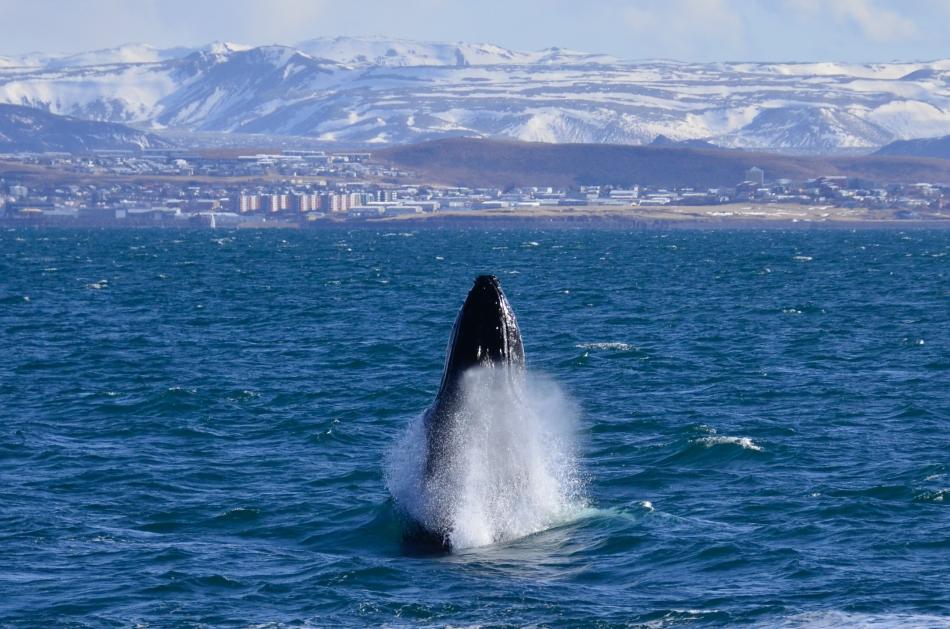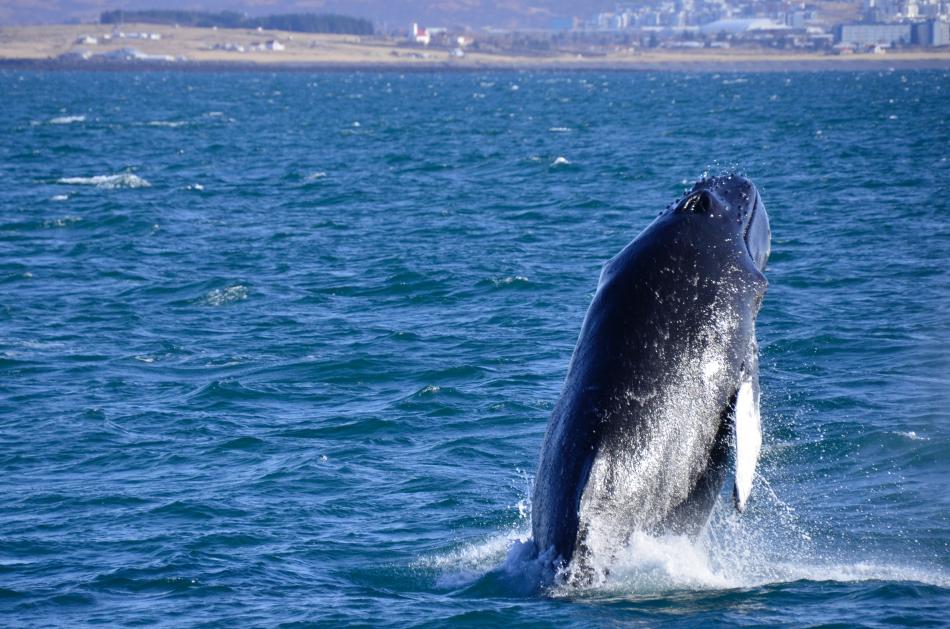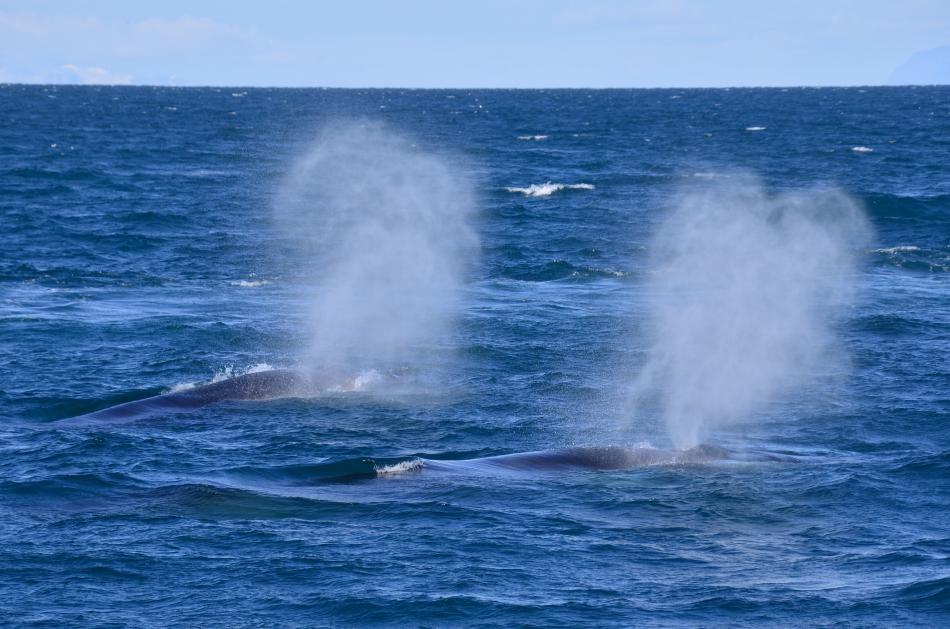Sunday, 26 March 2023
Today we are scheduled to be operating on our lovely vessel Eldey for the 9:00 and 13:00 Whale Watching tour. Make sure to dress appropriately for the tours as it is always colder on sea than on land.
- CLASSIC WHALE TOUR | 9:00
- CLASSIC WHALE TOUR | 13:00
COVID-19: Keep in mind that passengers and crew are asked to ensure their own hygiene and safety at all times. Washing hands thoroughly with soap and using a hand sanitiser is advised.
CLASSIC WHALE TOUR | 09:00
Report from Eldey: What an epic start to the day. We sailed out this morning on perfect conditions - very smooth sea and little to no wind. We were hopeful that we would find our cetacean friends from the previous day again but with nature you never know. After about an hour of sailing we saw a biiig blow in the distance! A fin whale! Actually two fin whales - wait three! We caught up with them and found the perfect spot to stay for a bit. There were not only 5 fin whales in total but also 3 humpback whales! We enjoyed all these beautiful creatures for a while and them spotted a pec slapping humpback whale in the distance and decided to go investigate. This whale seemed to be waving at us for attention but when we got closer it calmed down again. A few minutes later, a different humpback breached not too far from us!! We were caught by surprise and she did it again! What a beautiful sighting. At the distance, we also spotted a minke whale, that were not interested in joining us in the center, but still wanted to enjoy this very productive area. What an amazing day to go whale watching!
- Milla Brandao
CLASSIC WHALE TOUR | 13:00
Report from Eldey: We started the tour with high expectations as there were a lot of sightings in the previous tour. The weather was very nice with a very calm sea too. We sailed off and after some minutes we noticed some blows in front of us very far away. As we were getting closer we were surprised by a small pod of around 6 harbor porpoises coming very fast towards us. When we got closer to the blows we realized we were looking at 3 fin whales! (Very rare species in this bay). Just a few minutes later we spotted a humpback whale. Then, out of the blue, a massive humpback breached right in front of us 3 times in a raw!! What a crazy tour!. Finally we kept looking at the fin whales with some humpbacks surprising us from time to time. We were able to spot 3 humpbacks in total but there were blows all over the bay. After spending some time with all of them we headed back to Reykjavik so we could be there in time.
-Nicolás Corral
Wildlife encountered today:
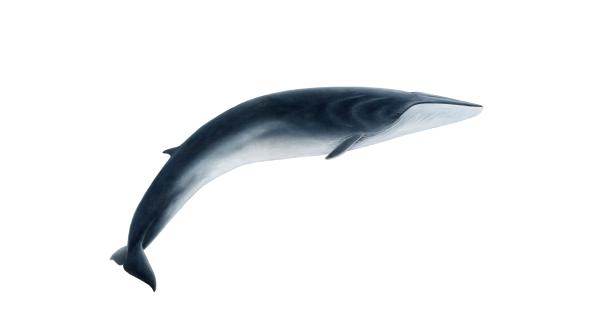
Fin whales are the second largest animals after the blue whale. Fin whales have been know to mate with blue whales and produce viable offspring. It is incredible to see the exhaled breath (blow) reaching 6-10 meters high just like a small geyser rising from the oceans surface and the long body that seems never ending as it dives back into the blue abyss.

The Humpback Whale is quite spectacular undergoing the longest migration of any mammal (5176miles/8334km one way), attracting females by singing to them and of course their energetic nature. On many occasions humpbacks have been seen breaching, tail slapping, fin slapping, blowing bubbles and spy hopping just to mention a few. The humpback is also one of the larger whales we encounter

The Minke Whale is the most common whale around Iceland and actually the world thus it is one of the main species we encounter on our whale watching tours. It is one of few species that don’t mind coming to shallower waters like here in Faxaflói Bay to feed on the abundant food available to them.

The Harbour Porpoise is the smallest and most abundant cetacean around Iceland. They are usually shy but occasionally they come and play around the boats. They can be relatively hard to spot from a distance due to their size and their abundance depends entirely on the food availability of our shores since they are opportunistic feeders.




